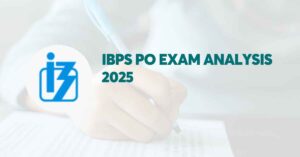The West Bengal Council of Higher Secondary Education (WBCHSE) has introduced a major overhaul in the vocational exam pattern for Class 11 and 12, impacting thousands of students across the state from the 2024-25 academic year.
Overview of the WBCHSE Vocational Exam Pattern Revisions
The WBCHSE has redefined the assessment framework for vocational subjects at the Higher Secondary level. Previously, vocational exams leaned heavily on practical components, but the new structure introduces a balanced approach.
- Total Marks: Each vocational subject now carries 100 marks.
- Theory and Practical Distribution: Marks are equally split – 50 for theory and 50 for practicals.
- Semester-wise Breakdown:
- Class XI: Semester I and II (25 marks theory each semester; practicals consolidated in Semester II).
- Class XII: Semester III and IV (25 marks theory each semester; practicals consolidated in Semester IV).
This change is designed to harmonise the evaluation process and bring vocational education in line with mainstream academic standards.
Why Did WBCHSE Change the Vocational Exam Pattern?
For years, vocational subjects under the West Bengal Council of Higher Secondary Education faced inconsistencies, including confusion over mark calculation and eligibility for aggregate scores. The recent reforms aim to:
- Enhance Uniformity: Standardise assessment for all vocational subjects.
- Improve Employability: Equip students with both theoretical knowledge and hands-on skills.
- Streamline Semester System: Introduce a four-semester structure across Class 11 and 12, aligning with the Higher Secondary (HS) exam pattern.
- Address Student Concerns: Previously, vocational subjects as electives were excluded from the ‘Best of Five’ aggregate, causing dissatisfaction among students and educators.
Key Features of the New WBCHSE Vocational Exam Pattern
| Feature | Details |
|---|---|
| Total Marks | 100 per subject |
| Theory Marks | 50 (25 per semester in Class XI/XII) |
| Practical Marks | 50 (consolidated in Semester II for XI, Semester IV for XII) |
| Semester System | 4 semesters: 2 in Class XI, 2 in Class XII |
| Exam Types | Multiple-choice (Semester I & III), Descriptive (Semester II & IV) |
| Core Subject Requirement | Pass in core subjects (Bengali, English, +3 others) |
| Vocational as Elective | Not included in ‘Best of Five’ aggregate |
List of WBCHSE Vocational Subjects
Currently, 16 vocational subjects are available under WBCHSE:
- Information Technology (IT)
- Automobile
- Retail
- Security
- Healthcare
- Electronics
- Plumbing
- Construction
- Apparel
- Beauty & Wellness
- Organized Retailing
- Tourism & Hospitality
- Banking, Financial Services and Insurance (BFIV)
- Food Processing (FDPV)
- Telecom (TELV)
- Others (as per recent updates)
These subjects were introduced to provide students with industry-relevant skills and better job prospects.
Impact and Benefits of the New WBCHSE Vocational Exam Pattern
- Balanced Assessment: Equal weightage to theory and practicals ensures students develop both conceptual understanding and technical proficiency.
- Semester-wise Focus: Regular examinations help students assess their progress and address learning gaps promptly.
- Enhanced Learning: The semester system encourages in-depth study and better retention of knowledge.
- Supplementary Exams: Students can retake failed exams alongside regular semester tests, reducing academic pressure.
- Alignment with Industry Needs: The curriculum is designed to meet current job market demands, fostering employability.
Also Read | JET 2025 Admit Card Released: Download Rajasthan JET Admit Card 2025 Now at jetskrau2025.com
Challenges and Student Expectations
Despite the positive changes, several challenges remain:
- Syllabus Uncertainty: As of now, a finalised syllabus for all vocational subjects has not been published, causing anxiety among students and teachers.
- Resource Availability: Many students are still awaiting updated textbooks and learning materials.
- Clarity on Aggregate Calculation: The exclusion of vocational subjects from the ‘Best of Five’ aggregate continues to be a point of contention.
Students and educators are urging the WBCHSE to provide timely updates and accessible resources to ensure smooth implementation of the new system.
How the New WBCHSE Vocational Exam Pattern Compares to the Old System
| Criteria | Old System (Pre-2024) | New System (2024-25 Onwards) |
|---|---|---|
| Total Marks | 100 | 100 |
| Theory/Practical | 30:70 (theory:practical) | 50:50 (theory:practical) |
| Semester Structure | Not strictly defined | 4 semesters (2 in XI, 2 in XII) |
| Exam Types | Varies | MCQs (Semester I & III), Descriptive (Semester II & IV) |
| Aggregate Inclusion | Excluded from ‘Best of Five’ | Still excluded |
Why Vocational Education Matters in West Bengal
Vocational education under the West Bengal Council of Higher Secondary Education is crucial for:
- Skill Development: Prepares students for immediate employment in diverse sectors.
- Industry Alignment: Keeps pace with evolving job market trends.
- Reducing Unemployment: Equips youth with practical skills, reducing the skills gap in the workforce4.
- Holistic Growth: Encourages students to explore non-traditional career paths.
Future Outlook for WBCHSE Vocational Education
The WBCHSE is committed to further refining its vocational curriculum and assessment methods. Future steps include:
- Regular Syllabus Updates: Ensuring content remains relevant and industry-focused.
- Resource Distribution: Providing timely access to textbooks and digital materials.
- Student Support: Offering guidance and counselling to help students make informed subject choices.
- Digital Integration: Leveraging technology for enhanced learning and assessment.
Conclusion
The WBCHSE vocational exam pattern revision marks a significant step towards modernising education in West Bengal. By balancing theory and practicals, introducing a robust semester system, and expanding subject options, the West Bengal Council of Higher Secondary Education is setting a new standard for vocational training. However, timely syllabus publication and resource distribution remain critical for the success of this initiative.






Be First to Comment